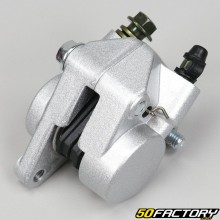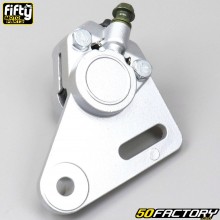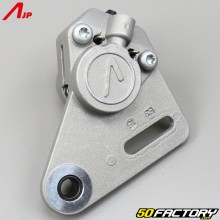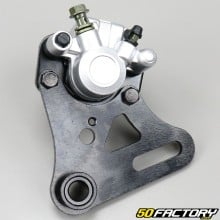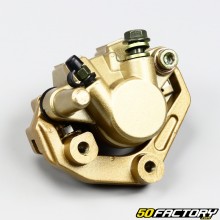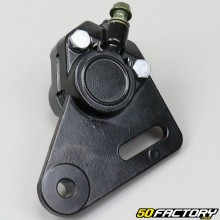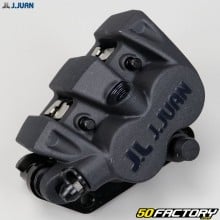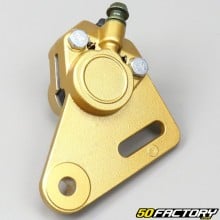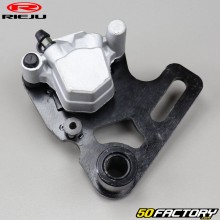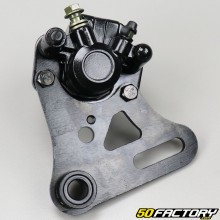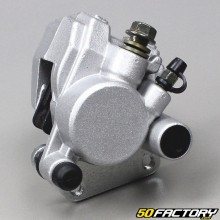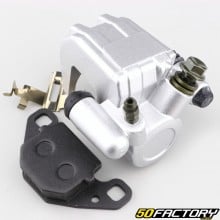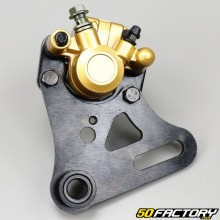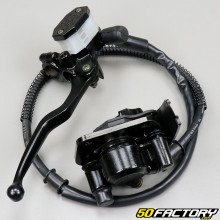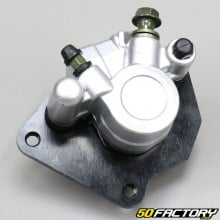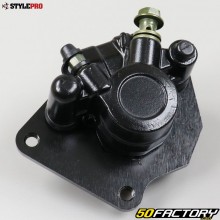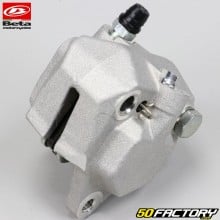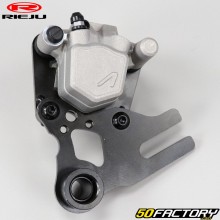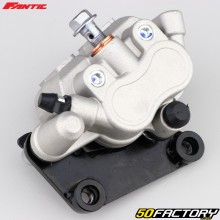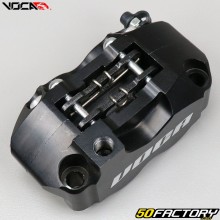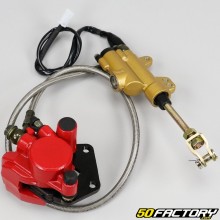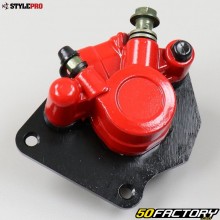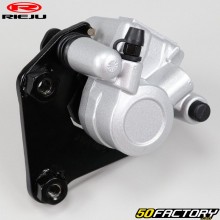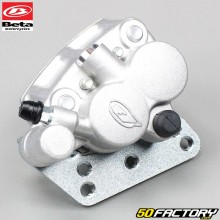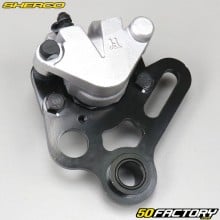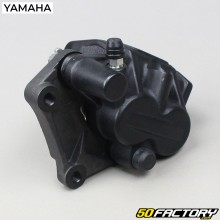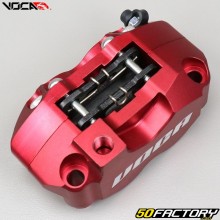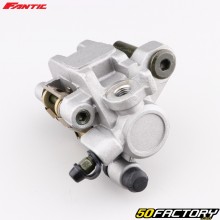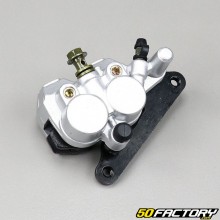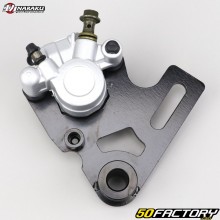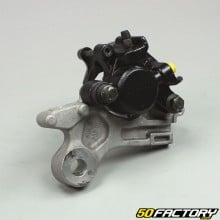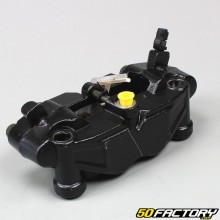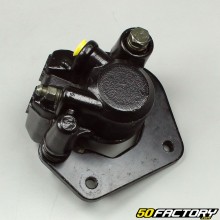 Brake caliper
Brake caliper
-
-
-
-
-
- STOCK EXHAUSTED200€20
-
-
-
-
-
- IN STOCK139€30
- IN STOCK223€60
-
- IN STOCK29€00
- IN STOCK57€10
-
-
- STOCK EXHAUSTED63€50
-
-
- IN STOCK139€30
- IN STOCK76€50
- IN STOCK34€60
- IN STOCK34€60
- IN STOCK98€70
- IN STOCK94€80
-
- IN STOCK103€40
- IN STOCK218€80
- IN STOCK387€40
-
- IN STOCK-28% 256,80 € 184€90
-
- IN STOCK98€70
- IN STOCK177€40
-
- IN STOCK88€50
- IN STOCK151€80
-
-
- IN STOCK55€00
To ensure the safety and performance of your two-wheeler, it is essential to understand the role and operation of the various components of the braking system, including the brake caliper. This guide aims to introduce you to this key element of the braking system, the signs that it is time to replace it, as well as advice on choosing, maintaining and repairing your brake caliper. You will also discover the wide range of high-quality brake calipers available forar our brand.
The role of this element in the braking system of your 50 motorcycle
A central element of the braking system, the brake caliper plays a crucial role in the safety and performance of your vehicle.
The brake caliper is the component that applies the force necessary for the pads to rub against the brake rotor to slow or stop your vehicle. It is therefore essential to allow you to control your speed and ensure your safety on the road.
Operation and main components
The brake caliper is made up of several parts: the body of the caliper, the piston which is actuated par brake fluid, and the pads that are pressed against the brake rotor. When you press the brake pedal, brake fluid is pushed toward the caliper piston, which, in turn, pushes the brake pads against the rotor to create the friction needed to slow or stop the vehicle.
The different types of brake calipers
In the world of two-wheelers, we find two main types of brake calipers: fixed calipers and floating calipers. Each type has its own characteristics and advantages.
Comparison Between Fixed Type and Floating Type
Fixed, they are integral with the braking system and contain pistons on both sides which press the pads against the brake disc. They are generally used on high performance vehicles thanks to their braking power and precision.
Floating, they can move sideways and only have pistons on one side. When the brake is applied, the pistons press the inner pad against the disc, while the caliper moves to the other side to press the outer pad against the disc. They are more commonly used on lower horsepower vehicles due to their lower cost and ease of maintenance.
Axial and radial
The term axial here refers to the direction parallel to the axis of rotation of the brake disc, the term radial to the direction perpendicular to this axis. An axial brake caliper is mounted par the brake disc side, while the radial is mounted par the front of the disc. The more recent radial mount allows better cooling of the caliper and greater braking precision.
Materials used for manufacturing
Generally made of cast aluminum or steel, these materials combine robustness and lightness. The choice of material can influence the weight, heat resistance and lifespan of the caliper, as well as its price.
How to choose the braking system for your 50 motorcycle
The choice of a caliper should be based on several criteria, including the type of vehicle, your driving style and the budget.
Choice based on vehicle type
The specifications of your two-wheeler or quad will greatly influence your choice. Par For example, a high-performance sports motorcycle will likely require a fixed brake caliper for maximum stopping power, while a city scooter might get by with a floating brake caliper for easier and less expensive maintenance.
Choice between an original model and an adaptable model
The original caliper is the one that was installed par the manufacturer during production of the vehicle. It has been designed to be perfectly adapted to your vehicle and can guarantee optimal performance. However, you can also opt for an adaptable brake caliper, which can offer comparable performance at a more affordable price, or help improve the braking performance of your vehicle. It is therefore a personal choice which will depend on your budget, your needs, and your level of mechanical expertise.
Signs of failure and caliper replacement
In good condition, it is essential to ensure optimal braking performance. But how do you know when it's time to replace it?
Signs It's Time to Replace This Component
Warning signs of a faulty caliper may include less effective braking, an unusual vibration or noise when braking, deformation or discoloration of the brake rotor, or a warning light on the dashboard. If you notice one or more of these signs, it's time to check the condition of your caliper.
When he has the flu: causes and solutions
A seized caliper can be caused par several factors, such as a stuck piston, a brake fluid problem or worn internal parts. To resolve this problem, it is usually necessary to disassemble the caliper, clean and inspect the pistons, replace the seals if necessary, and bleed the brake system. You will find the entire procedure by clicking: “How to unblock your brake caliper”
Procedure for replacing a defective element
Replacing a faulty caliper is a relatively simple operation that can be carried out par any vehicle owner with basic mechanical knowledge. This involves disassembling the brake caliper, plugging in a bleeder screw to prevent brake fluid from escaping, cleaning and inspecting the components, and installing the new brake caliper. Follow our tutorial for replacing a brake caliper
Maintenance and service life
Regular maintenance of your brake caliper is essential to ensure its performance and durability.
Tips for maintaining this component
To take care of your stirrup, it is recommended to regularly check the thickness of the platelets, check the cleanliness and condition of the pistons, and replace the brake fluid every two years or according to the manufacturer's recommendations. It is also advisable to avoid humidity and dirt which can promote corrosion and damage the brake caliper.
How to avoid malfunctions and extend service life
Good regular maintenance, the use of quality parts, and respectful operation of the braking system are the keys to extending the life of your caliper. If in doubt about the condition of your caliper, do not hesitate to consult a professional.
Models available at 50 Factory
We offer you a wide range of high quality brake calipers for all types of two-wheelers and quads, suitable for many makes and models of vehicles.
Presentation of the models offered
Whether you are looking for an original or adaptable caliper, a fixed or floating model, axial or radial, our varied selection will meet your needs. All our calipers are manufactured to the strictest standards to guarantee their quality, performance and durability.
Benefits of buying from us
Buying a brake caliper from us means benefiting from a wide choice, competitive prices, fast and reliable delivery, and quality customer service. Plus, with our ease of navigation, you can easily find the brake caliper that perfectly matches your vehicle and needs.
Comparison of brake systems from different brands
With so many different brands on the market, how do you know which one to choose for your brake caliper?
Comparison of brands on the market
Among the most popular brands are AJP, J. JUAN, Naraku and many original calipers. All of these brands are renowned for the quality, performance and durability of their products.
The quality criteria of a good braking system
A good system must guarantee precise and consistent braking power, good heat resistance, high durability, and ease of maintenance. Also check that the brake caliper is compatible with your vehicle to avoid any installation issues.
In conclusion, choosing the right brake caliper for your vehicle and driving style is crucial to your safety and performance on the road. With our range of quality products and dedicated customer service, you can be sure to find the perfect brake caliper for your needs. Good road !
Remember to consult the other categories of the cycle part to find all your parts brake pads, brake lining and drum, brake disc, brake caliper, front brake master cylinder, rear brake master cylinder, rear brake pedal, brake hose and support, brake cable, caliper repair kit, master cylinder repair kit, caliper part, master cylinder part.

















































